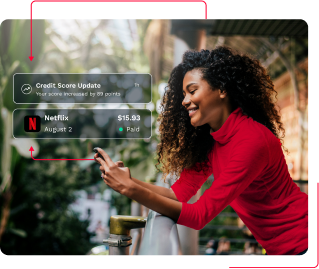That plastic rectangle in your wallet isn’t just a payment method. It’s an important financial tool that can unlock rewards, build your credit reputation, and even act as a springboard to your financial goals. But, if you’re not careful, it can become a debt trap.
Whether you’re a seasoned swiper or a credit card newbie, this toolkit we’ll equip you with the knowledge to turn your credit card into an asset, not a liability.
What Lenders Look for in Credit Card Applicants
First things first, let’s tackle the nitty-gritty of what it takes to get approved for a credit card. Here’s a breakdown of the key factors credit card companies typically analyze:
Credit Score: This three-digit number, ranging from 300 to 850, is a major influencer. Generally, higher scores (above 720) indicate a strong credit history and make you a more desirable borrower. But don’t be discouraged if your score isn’t perfect. Secured cards or student cards can be stepping stones to build credit.
Income & Employment: Lenders are looking for someone with a predictable paycheck because that signals to them that you’ll be able to make your monthly payments. A steady flow of income, combined with a solid job history, paints a picture of financial responsibility and makes you a more attractive borrower. Even if your income isn’t sky-high, showcasing stability can go a long way in impressing lenders.
Debt-to-Income Ratio (DTI): Lenders care how much debt you’re juggling compared to your income (your debt-to-income ratio). Think of it like this: the smaller the debt slices compared to your income pie, the more likely you are to manage a new credit card responsibly. Ideally, keep it below 36%.
Credit History: Your credit history tells lenders how you’ve handled credit in the past. It includes things like paying bills on time, keeping credit card balances low, and even the types of credit you’ve used (loans, cards, etc.)
Other Factors: Depending on the card and issuer, factors like age (some cards have minimum age requirements), residency (location can play a role in certain offers), and credit inquiries (too many recent applications can raise eyebrows).
Examples:
- Good credit candidate: Sarah has a credit score of 750, a stable job with a good income, and a DTI of 25%. Her responsible credit history with a previous card makes her a strong applicant for most cards.
- Almost there: Michael is fresh out of college and has a limited credit history with a score of 670 and a part-time job. He can consider a secured card with a lower credit limit, focusing on timely payments to build his credit score.Michael is fresh out of college and has a limited credit history with a score of 670 and a part-time job. He can consider a secured card with a lower credit limit, focusing on timely payments to build his credit score.
- Building credit: Emily has a score of 580, recent missed payments, and a high DTI. She might struggle with traditional card approvals but could explore secured cards or rebuild credit before applying for unsecured cards.
Remember, these are general guidelines, and specific requirements vary by issuer and card type. Researching different cards and comparing requirements beforehand will help you choose the card you’re most likely to be approved for.
Cracking the Code: Credit Card Rates Explained
Credit cards are essentially short-term loans, and borrowing comes with a price tag, often hefty, with rates exceeding 20%. Here are a few important terms to know:
- Introductory Rates: These tempting low rates, typically lasting 12-18 months, are just a taste of the good life. Once they expire, your standard, often higher, rate kicks in.
- APR (Annual Percentage Rate): This is your yearly interest rate, the true cost of borrowing. Got a 25% APR? Don’t panic, that’s not your monthly rate! Divide it by 12 for a more realistic 2.08% monthly charge. You can find this number listed on your statement and card agreement. But be careful, many companies calculate interest on your average daily balance, meaning even past-due amounts rack up charges.
- Variable Rates: Unlike their fixed counterparts, these rates fluctuate based on market conditions. Keep an eye on your statements for updates.
Action item: Grab your credit card statements and note your credit card rates. Fixed or variable? Are there late fees or annual charges lurking?
Your Credit Score and the Rate Rollercoaster
Your credit score and credit card influence each other. Your credit score plays a major role in determining your interest rate, while how you use your credit card (like if you pay your card on time and how much of your available credit line you use) impacts if your credit score goes up or down.
A credit score in 700s could land you a better interest rate, say between 15-20%, while a score in the 500s-600s might bump you up to the 20-30% range.
Let’s see this in action: You have a credit card with an 18% APR and had to spend $4,000 for an emergency. Your first month’s interest would be $60. But if you have a lower credit score and got a 25% APR you’ll be hit with a $83 charge – that’s a $23 difference for the same situation!
The message is clear: your credit score is the key to unlocking lower rates and saving serious money. So, how do you level up your score?
- Know your score: Pull your free credit report. It’s like a financial map, showing your score and areas to improve.
- Build responsible credit habits: Pay bills on time, keep balances low, and avoid maxing out cards. Think of it as training your financial muscles.
- Utilize credit-building tools: These can help you improve your credit score faster. Here are a few we trust: These can help you improve your credit score faster. Here are a few we trust:
- Varo: Their secured credit card is great if you don’t yet qualify for a credit card or want to build your credit score without taking on new debt.
- OpenSky: A secured credit card with the potential to graduate to a traditional credit card in as little as six months.
- StellarFi: Build your credit score with the monthly bills you already pay, like your streaming services, utilities, and rent.
Swipe Smart
Credit cards, when used wisely, can be powerful tools for building credit and reaping rewards. Remember, the key is responsible usage.
- Budget-Conscious Spending: Don’t fall into the overspending trap. Only use your card for what you can afford – emergencies happen, but planned purchases should fit your budget.
- Rewarding Rewards: Travel points, cashback, airline miles – unlock the full potential of your card’s rewards! Don’t let valuable points expire due to misuse.
- Utilization Matters: Utilization is the percentage of your credit limit you’re using. It’s not just about one card. Your total utilization across all credit lines matters. So, even if you keep one card low, maxing out another can still drag your score down. Spread your spending wisely and keep that overall utilization rate below 20%.
Action item: Calculate your credit card utilization. Surprised? Time to adjust your spending habits!
Action item: Check what rewards your cards offers. Are you maximizing them? Don’t let those points go to waste!
Remember, your credit score and responsible choices hold the key to unlocking favorable credit card rates. StellarFi is here to help you navigate your financial journey and improve your credit score so you can access financial freedom.


